|
from Susan Good | retired educator | https://retirededucator.org Few things are more fulfilling than enriching the lives of children and young adults, and one of the most practical ways to do that is to become a teacher — where you help students learn everything from math and science to music and language arts. Of course, becoming a teacher is not easy, and much of your path will depend on where you live and what your goals are. To help you get started on your journey, here is some general advice for how you can prepare for becoming a teacher. What Level of Education Is Needed?
There are two basic pathways to becoming a teacher: the traditional path and the non-traditional. Most people choose the former, which involves earning a college degree in education, while the non-traditional route is any path you take that doesn’t involve an education degree. For instance, if you have a degree in business or some other field of study that’s unrelated to your teaching goals, you can still become a teacher. Teacher preparation programs and/or other training programs are typically required for the non-traditional path. Most public schools and many private schools require you to have a bachelor’s degree, along with passing certification tests and fulfilling a preparation program. You should be able to find a job at an elementary school, middle school, or high school if you have a bachelor’s degree in education. Moreover, many high schools look for candidates who have earned a double-major degree. So if you want to teach high school, you might do well to major in both education and whatever subject you plan to teach. If your goal is to teach college, you should plan to pursue at least a master’s degree. Not only will it help you learn the skills you need to be a great teacher, but it will also improve your chances of landing your preferred teaching job and qualifying for salary increases. What Will You Teach? Choosing what grade/level you will teach is important when it comes to positioning yourself for a successful career, as well as determining what path of education to take. What are you passionate about? If you love teaching primary skills to small children, kindergarten could be the perfect grade. If you love teaching children but would like them to be a little more self-sufficient, then going up to elementary-level grades might be a good fit. Do you have a passion for a particular subject? Teaching middle school or high school could be the way to go. A lot of teachers find that middle school provides the opportunity to teach kids who are old enough to use their independence yet still impressionable enough to make it clear you’re making a difference in their lives. High school, on the other hand, will allow you more freedom to dig deep into a particular subject. If you want to teach more advanced topics, you might consider pursuing a career in university teaching. This not only will allow you the most room for exploring your field of passion in detail, but it will also offer the best pay. How Do You Land Your First Job? Assuming you’ve earned the appropriate degree and have passed all necessary certification programs, it’s essential to create an online portfolio. This portfolio should include anything that presents your qualifications as a teacher, such as certifications, licenses, your philosophy statement, student teaching recommendations, and sample curriculums. Start looking at job postings in your district in early spring, and prepare for each interview thoroughly. Furthermore, don’t rule out online teaching jobs, as they can provide a great opportunity to use your skills and advance your teaching career. If you’re looking for a fulfilling career, you can’t do much better than teaching. Remember to start preparing now to determine what level of education you need to obtain, what grade level and subjects you will teach, and how you will get your first teaching job. You're in for some challenges, but they will all prove well worth it as you realize how you're making a real difference in your students’ lives.
0 Comments
from Patty George & Ashley Sutton | Buffalo State College Learning sight words is an important part of learning how to read. Children need to recognize sight words quickly and efficiently so they can focus on comprehending the text they are reading. A multisensory approach is a great way to help children commit these tricky words to memory. In this video, teacher candidate Ashley Sutton (Exceptional Education) is demonstrating how to practice sight words at home with Play-Doh. If you don’t have Play-Doh, Ashley provides a recipe for how to make your own! For a list of sight words, visit children’s author Jan Brett’s website to download your own beautifully illustrated sight word lists. Visit the “We Are Teachers” blog to learn 40 creative ways to practice sight words in the classroom or at home. And check out the Buffalo State Global Literacy Channel for even more videos that will help the young readers and writers in your life. Ashley Sutton is an undergraduate student in the Exceptional Education program at Buffalo State College. Following graduation in Fall of 2021, Ashley hopes to become a second-grade inclusion classroom or ESL teacher. Ashley enjoys baking and cooking and loves being an education major at Buffalo State because of the support and guidance received from her professors on her path to becoming a successful teacher.
Patricia George is a lecturer in the Elementary Education, Literacy and Educational Leadership Department and co-director of the Global Literacy Engagement initiative at Buffalo State College. Children's literature is the foundation of everything Patty does. She loves motivating teacher candidates to read to children and has worked extensively as a literacy consultant, coaching classroom teachers on effective reading and writing instruction. 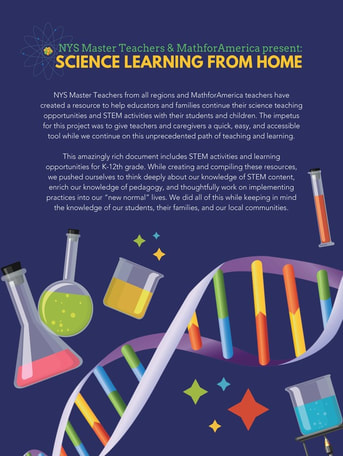 From David | Buffalo, NY A group of Master Teachers from across the New York state worked together over the past few weeks to put together materials for online science teaching. This collaboration blossomed into a comprehensive resource - Science Learning at Home - that teachers and parents will find useful. Although the primary audience is teachers, there were many suggestions that are great for parents looking for fun science activities to share with their children. The following lists some of my favorite variety of online and hands-on activities. This will be enough to keep your young scientist busy for a few weeks! Aquarium of the Pacific: Online Academy There are tons of age appropriate links to videos, such as virtual dissections and animal monitoring, career chats, fun activities, etc. Mystery Science Open-and-go lessons that include short videos and discussion questions on numerous elementary science topics and aligned with Next Generation Science Standards. Sharks 4 Kids Webinar Interviews with Shark Scientists and Camera Crew; must download a free version of Zoom and register in advance. Sea Smart Learning Fun, hands-on games and activities to teach K-12 students about current issues impacting our oceans. Reeko Science Science experiments, news, games, jokes and humor and resources. Science Kids Fun science experiments, cool facts, online games, activities, lesson plans, quizzes, videos, photos and science fair project ideas. NSTA Daily Do National Science Teacher Association offers daily hands on “sense-making activities” that engage students in relevant, authentic science learning. Lessons for teachers and parents. Includes access to interactive E-books on K-12 science topics. National Geographic Kids Science Lab Hands on science experiments, videos and articles for K-5 students to explore. San Francisco Exploratorium A collection of free "do at home" science activities for all ages. from Kelly | Las Vegas, NV
BrainPOP
BrainPOP is one of my absolutely favorite websites to use! Currently, BrainPOP is offering free access to all levels and topics. There is typically a membership fee. BrainPOP has many options for units, ELL, and grade level. They currently serve: BrainPOP Jr. (K-3), BrainPOP ELL, BrainPOP Spanish, BrainPOP French, and BrainPOP (5-12). The site offers a variety of topics such as: science, math, english, social studies, art, music, health and SEL, and technology. I love to use BrainPOP when it comes to health education. In health, we talk a lot about personal hygiene, body parts and systems, mental health, drugs and alcohol, decision making, conflict resolution, relationships, emotions, goal setting, and exercise. BrainPOP offers animated videos for multiple topics, and provides free, printable worksheets of key vocabulary and check for understanding. It may seem “kid oriented” but I use this at the high school level too! The language is easy to understand and follow. Scholastic Scholastic is also offering free access to their weekly articles. The link above will take you to the homepage where all you have to do is select the appropriate grade level. From there, it will direct the user to a page full of articles, some complete with online quizzes, scavenger hunts, and videos. The topics range greatly and more are added every week. Newsela This is one of my go-to’s. It is a kid and teen friendly site that offers free access with a login account. Newsela stays current and up-to-date with everything going on in the world from sports and weather, to national women’s day around the globe. For health, I especially love the Newsela Social-Emotional Learning (SEL) collection. From elementary to high school grade levels, Newsela offers articles of all kinds that discuss real-world problems and situations kids and teens face daily, like mental health, anxiety, emotions, and bullying. Newsela also allows the user to select a reading level. It will be the same article, but the language can be altered to a lower reading level or to a higher reading level. Quizzes are available at the end of most articles as well. GoNoodle GoNoodle is definitely more “kid oriented," however I’ve done multiple of these and I am always out of breath by the end! GoNoodle is a free website, all you have to do is create an account, that gives you access to follow-along videos to get those bodies moving. It is a great resource especially for young kids who have extra energy, or just need a brain break! Other Ideas:
from Ashley | Buffalo, NY The transition to distance learning has created barriers for students of all ages as well as their teachers, professors, and families. Teacher candidates in Dr. Julie Carter’s EDU 310, Teaching Social Studies in the Elementary School course at SUNY Buffalo State worked diligently to remove some of those barriers for students at Waterfront Elementary school. The teacher candidates’ major project was a five-lesson unit plan which integrated social justice as well as history content focused on the American Revolution. Panic Sets In As students and professors learned they would be moving to distance learning in the weeks to come, this invoked panic in many. Many teacher candidates wondered what impact these decisions would have on their education in the weeks to come. While professors did not have the answers to these questions immediately, Dr. Carter got to work determining how her students can stay connected with students to maintain a mutually beneficial relationship. Making Changes Within the next week, Dr. Carter worked out the changes to reflect learning in a virtual environment. While there were many changes, the course itself remained very much the same. Students would still be teaching the students at Waterfront Elementary about the American Revolution, but instead with online modules and activities. Dr. Carter searched for the best online learning tools and located Sutori, which is an incredibly easy to navigate tool that presents materials to students in a “feed.” As you scroll from the top to the bottom of the page, students will see all materials necessary for each day in chronological order. This format makes content delivery easily manageable for college students and easily accessible for students and their families. Teacher candidates worked in three groups to create lessons about the American Revolution which integrated; mapping, arts, and literature. Collaboration looked a bit different than it may if we were still on campus, but it did not stop. Teacher candidates welcomed the use of Zoom video chatting platform in order to plan most of their lessons together. To stay in touch in between video calls, students used a platform called Slack which made accountability easy. Before We Teach, We Bond Before diving into learning about the American Revolution, as in any “classroom” setting it was essential that we create a socioemotional bond with the students. This was more important than ever during these particularly stressful times. Student volunteers created lessons based around socioemotional awareness and managing emotions during these stressful times, which showed students examples of coping strategies for staying safe and busy within their homes.
Because students would be completing these modules independently, it was more important than ever that teacher candidates locate a variety of resources to teach students. A few of these resources include interactive mapping, text, videos, and drawing activities. It was also important for teacher candidates to ensure that their lessons would be accessible to students with varying abilities. It is unrealistic to expect that every student will do every assignment during a time like this. While recognizing this, teacher candidates also believe this project can be a great tool for parents as they try to navigate their children’s distance learning. By clicking one link, the student will be brought to a series of engaging activities. Challenge Accepted As a teacher candidate pushed into distance learning and teaching, it was easy to feel overwhelmed with the task at hand. For so long I have relied very heavily on face-to-face instruction. How could I ever make distance learning work? It wasn’t easy, but when I figured it out, it was a great feeling! As I come to the end of my undergraduate career within the next year, I will be grateful for this opportunity. This short period of discomfort allowed me to grow more than I could have imagined as a teacher candidate. I am now aware of the resources which are available to facilitate learning and communication from a distance. This experience will make me a more flexible and competent educator in the twenty-first century classroom. While the situation which led to this change has been less than ideal, I have grown tremendously as a teacher candidate. Ashley Bohne is an undergraduate student in the Exceptional Education program at Buffalo State College. Ashley also serves as a PDS Student Representative. Following graduation in Spring of 2021, Ashley will begin the Literacy Specialist program. Ashley has a particular passion for working with students with special needs in a variety of settings.
 from Tamara | Buffalo, NY Anyone who spends time with children (of all ages) quickly learns that the path of development is not straight, smooth and obvious, but rather full of twists, turns, even detours and sometimes backtracking. As soon as we think we know what is happening and how we should respond, everything goes off track and we find ourselves full of questions and frustration once again, seemingly back to square one. Anyone who spends time with children also learns that journey can be rewarding and joyful, especially when we feel mentally equipped and emotionally capable of stretching and re-aligning as we go. We feel empowered and energized each time we get something "right" with our kids and know deep down that we've met them where they are at right now, and gave them what they needed from us at this moment. Especially during this time of worry and change, when all families are spending more time with their children - with the added role of daily teacher - it is important to have a deeper understanding of the stages of child development and the empathy for the different paths that each child takes within these norms. An awareness of the stages of child development is critical for understanding children, and being prepared to meet their needs appropriately. Knowing what to expect with each phase of your children’s growth is helpful for maintaining perspective and determining ways to support children in becoming successful individuals who are capable of reaching their full potential. Knowing what is typical for certain ages will also help you be more patient, understanding, and tolerant of challenging behaviors and reduce the chance for blaming -- blaming your child for acting in ways that you think are inappropriate, and blaming yourself for your inability to “control” or meet the challenges they bring! The Center for Parenting Education provides a wonderful overview of child development and typical child behavior. Because each child is unique, how you approach one child will differ from how you approach another. What works for one caregiver may not work for another. What works with a child one moment may not work later (or even immediately after the first time). As you read through the lists, it is imperative to remember that children grow and learn in their own unique ways and in their own unique timing. You can use this information about the stages of development to prepare yourself, then be ready to adapt or let go as your child needs. While knowledge is power, flexibility is freedom! 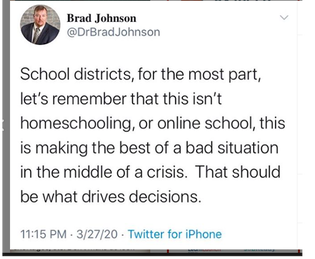 from Elizabeth | Seneca Falls, NY I am a graduate student from Buffalo State, currently completing my student teaching through remote instruction, with the guidance of my teacher-mentor, in Rochester, NY. Earlier this week I happened upon this post at @teachersconnect: School districts, for the most part, let's remember that this isn't homeschooling, or online school, this is making the best of a bad situation in the middle of a crisis. That should be what drives decisions. I find this quote to be insightful because we are, in fact, in the middle of a crisis. I have felt a little discouraged these past two weeks wondering: Why are only a few parents responding to my outreach? Why have only 4 out of 21 students turned in their assignments? And so forth. I kept thinking that it must be me. I made interactive and engaging videos that were sent home. I came up with fun activities for the students to do with their families. But still...only a couple responses. The quote put things in perspective for me. A crisis. A pandemic. A very scary and uncertain time. Students are facing a huge change in their life, especially the little ones who need routine. They are overwhelmed. Parents and families are becoming unemployed and not all of them will be able to receive unemployment. They must find a way to provide for their family while trying to teach their child or children the lessons we have been sending home. They are overwhelmed. My school was closed right at the 8 week mark of my student teaching placement. Since I am still student teaching, there are certain things I must complete and submit in order to become certified. As I frantically try to get all the pieces together, I also learned to step back and took a breather. I am overwhelmed. As an educator, it is my duty to make sure that the children are receiving the education to which they are not only entitled, but also deserve. I am doing the best I can to ensure that my families have the resources they need. I continue to send home engaging videos and resources and activities, but I am not getting down on myself or feeling as though I am not doing enough. We are in the middle of a crisis. To the teachers out there I say...
These may seem like small successes when we compare them to what the outcome would be if we were still in our schools. But we are not in our schools. We are at home in the middle of a crisis doing the best that we can. The most important thing right now is the health, safety, and mental well-being of our students, families, community...and don't forget yourself! Step back, take a deep breath, and know everything will work out in the end. Make the best out of this bad situation. 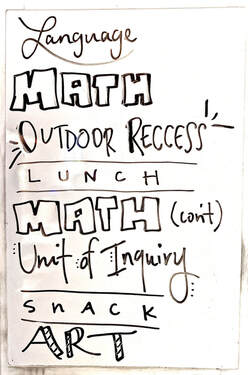 from Molly | Buffalo, NY International Baccalaureate (IB) is an educational philosophy for students ages 3-18 that values student agency, inquiry-based learning, and intercultural understanding to inspire lifelong learners. The ideal IB classroom gives students ownership of their own schedule, with no blocked off times because all subjects areas are meant to be transdisciplinary and connected. The following tips are ways you can incorporate some of the IB principles into your own learning routine and rhythm at home:
from Amanda | Rochester, NY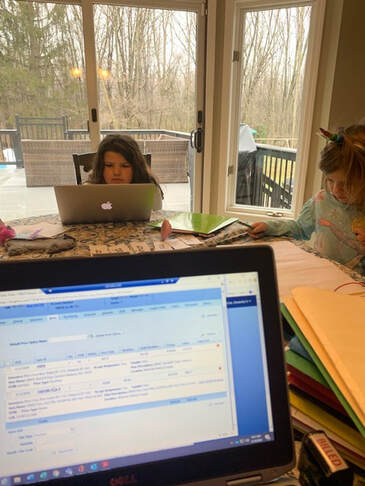 During this time at home due to the current COVID-19 outbreak, I have created a schedule to help with everyday life. My husband and I both work full time and we have both had to continue our jobs full time. Luckily, my job as a medical biller enables me to remotely from home. The challenging part was how do I juggle work along with keeping my kids on a daily schedule. As I started this I have learned quickly what works and whats doesn't. Every night I now make a lesson plan based on the work that their teachers have provided. Weekly assignments are sent out each week for my fourth grader, whereas my first grader receives a day-to-day schedule. Every morning we start with breakfast, then begin literacy immediately afterwards. For my fourth grader we use i-Ready and SpellingCity, or any articles that her teacher assigns. For my first grader we begin with a read aloud book that was assigned. We then move on to math. For my fourth grader this consists of 10 minutes of Moby Max, as well as any other assignments that were assigned. For my first grader we use SplashLearn (formerly SplashMath), or we complete an exercise that involves counting everyday objects found around the home. Around 11:00am everyday I have the girls read to our Goldendoodle, Morgan. After that, lunch and then Lunchtime Doodles with Mo Willems. In the afternoon we begin to wind down and outdoor time is encouraged.
My fourth grader was starting Girls on the Run, local teams that meet twice a week with volunteer coaches who inspire girls to be confident through running, but unfortunately it was canceled due to the current pandemic. Thankfully, they have provided a series of virtual videos that offer exercises and games for the young, inspiring runners. We then close with a short run to keep it up, of which I hope gets longer as she progresses in the program. My other daughter will watch a SciFi Kids video on YouTube and then plays outside, or goes on Go Noodle to end her day. Having a schedule is very important to me and my children. I feel that everyone works better with structure and organization. This way, when kids go back to school in the near future they will continue where they left off... although they will have to change out of pajamas! from Alissa Marquess at Bounceback Parenting | Posted March 11, 2020
Both adults and kids are likely feeling stress right now and it only adds to your stress when you see your child struggling. You can take the following steps to talk with your child about Coronavirus (or any stressful situation, really). Remember, you know your child best, so read through and then take what works for you. These steps are based on my training as a ICF certified coach, so they are designed to help your child find a sense of personal power in their situation. The three steps I’m outlining are:
1. Check in with how they’re feeling. You might have a sense of whether your child is anxious or not (they might not be, and that’s fine!). Either way, look for an opportunity to check in. Find a moment when you can be present with your child. Use your knowledge of their personality to choose if you want to ask around siblings or when you have a chance to check in with them alone. You might say something like, “I’m sure you’ve heard about the Coronavirus. How are you feeling about what’s going on?” Keep it simple. Just ask and then stop talking to give them a chance to respond with any thoughts, feelings or questions they might have. 2. Listen and acknowledge Don’t try and fix it, just listen. You may feel uncomfortable if you’re hearing fears and anxieties. It’s natural to want our kids to feel better! However, one of the best ways you can help your child is through active listening, rather than jumping on what their saying to try and quell those fears. Give them a chance to really offload what’s on their mind. As you listen, some good active listening replies include:
Listening without trying to fix helps expand your child’s feeling of self trust and validity. Instead of trying to whisk away their emotions by saying something like “It’ll be fine, don’t worry about it.” you’re basically saying, “I hear you and you make sense. I trust you to know your own emotions.” As you well know it doesn’t feel good to feel scared or anxious. However we are more than our emotions, we get to make choices about how we respond to our emotions. When you listen in this way it helps your child see that YOU are not scared of their emotions, and you are not getting swept away by those emotions. This provides a sense of safety. 3. Follow up with questions that invite a feeling of capability and resourcefulness. After listening and letting your child tell you everything they’re feeling right now (a great question to make sure they’ve got it all out is “Anything else?”) then you can follow up with a question that helps them tap into their own capability and resourcefulness. Remember to ask and then leave space for them to think for a while before talking any more or adding suggestions. Depending on what your child has shared with you these questions might include:
This may lead to further discussion about steps their school is taking, or questions about what your family is doing. If at any point you feel uncertain, you can always put a ‘placeholder’ in the conversation, for instance “That’s a really good question- I’m gonna research a little and let you know what I find.” You don’t have to have all the answers, but showing that you are able to take actions like researching helps kids feel safe and shows them a way to proactively problem solve. Wrap up with encouragement and gratitude. This might sound like, “You’re doing a great job washing hands. Thank for chatting with me about this, I like knowing what’s on your mind.” It’s really helpful for kids to know that it’s totally ok and not a burden on you when they share concerns with you. The truth is, we can’t pretend this isn’t a scary time. But we can be honest and talk with our kids in a way that allows them to tap into their resilience and capabilities. Sometimes these capabilities are just the capability to reach out for comfort, and at least you can give that. This kind of conversation lets you stay connected with your kids, even when you’re experiencing a stressful situation. |
WELCOME!
Hearing from others can be the antidote to the overwhelm and stress you feel as you navigate homeschooling. Longstanding teachers, retired educators, brand new homeschooling parents and guardians, budding teacher candidates...we want to hear from you! Please contact us to share your wisdom, struggles, support, ideas, advice, empowerment, and inspiration. Archives
March 2021
Categories |


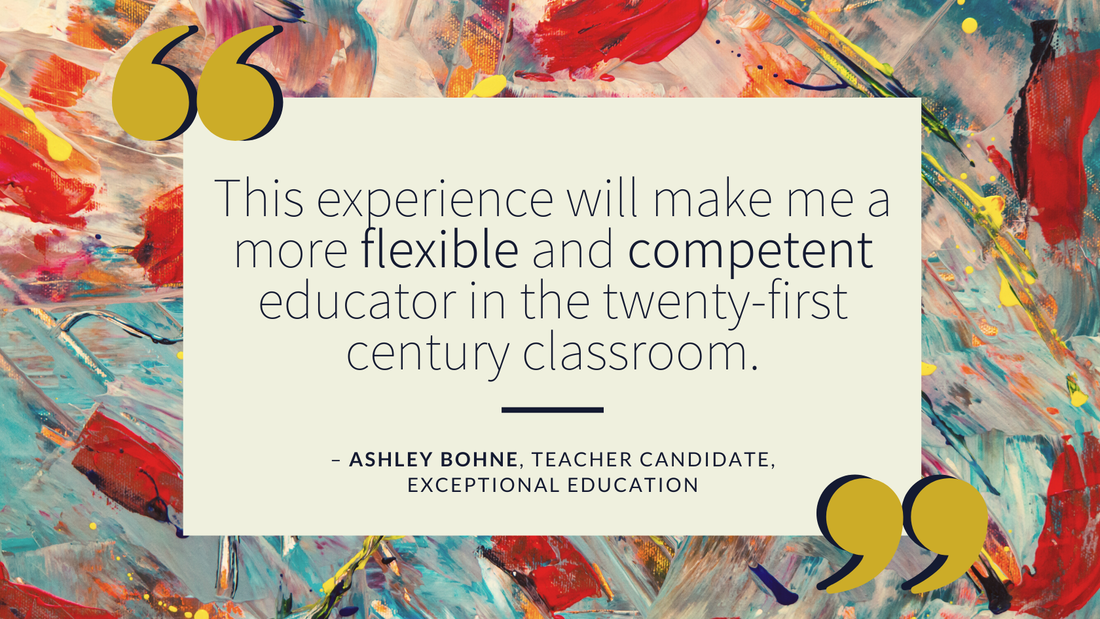
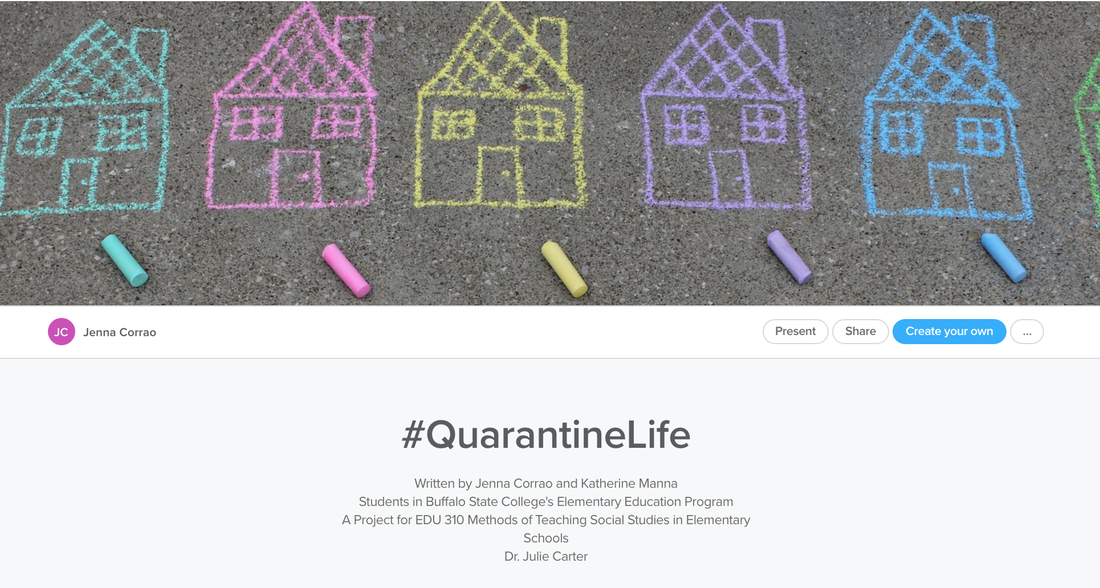
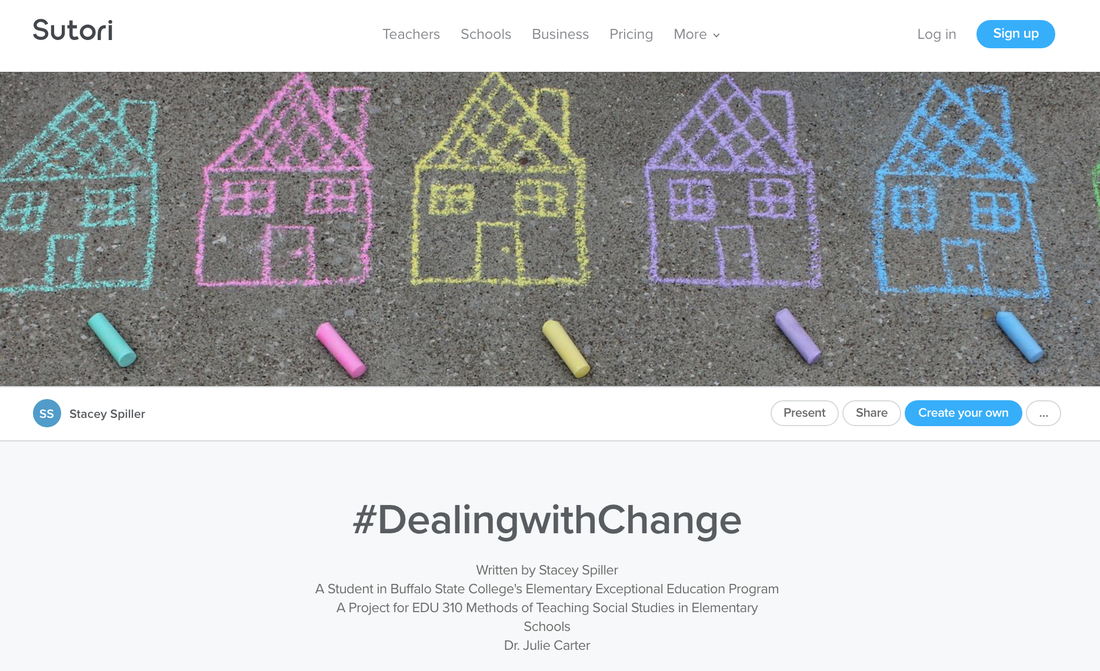
 RSS Feed
RSS Feed